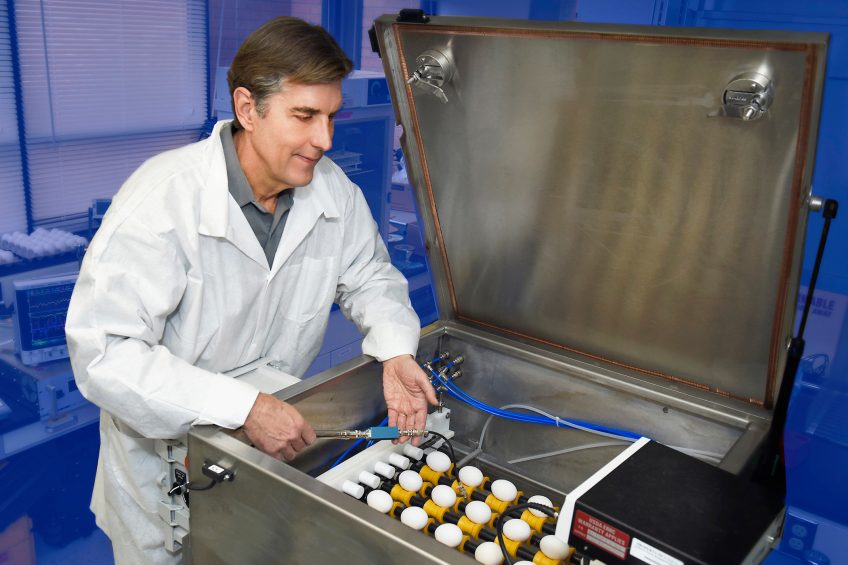Scientists find new way to pasteurise eggs

An Agricultural Research Service (ARS) scientist in Pennsylvania and his colleagues have developed a technology that rapidly pasteurises eggs and could sharply reduce the number of illnesses caused each year by egg-borne Salmonella bacteria.
The device invented by David Geveke, a chemical engineer at the ARS Food Safety and Intervention Technologies Research Unit in Wyndmoor, uses radio frequency (RF) waves to heat eggs and kill Salmonella without damaging the delicate egg whites. Partners include Christopher Brunkhorst, an electrical engineer from the Princeton Plasma Physics Laboratory in Princeton, New Jersey.
Current pasteurising techniques
Less than 3% of the 74 billion fresh eggs produced in the USA each year are pasteurised. Eggs are currently pasteurised by immersing them in hot water (130 to 140 °F), but the process takes about an hour and adds about $1.50 to the retail price of a dozen eggs. It can also cause proteins in the heat-sensitive egg whites to denature and coagulate. That happens because the heat has to go through the egg white, or albumen, before it reaches the more heat-tolerant, nutrient-rich yolk, where Salmonella bacteria like to grow.
The patented RF process ensures that the yolk gets more heat than the albumen. The process is also faster and should lower the cost of pasteurisation – and the price of pasteurised eggs on store shelves. RF technology is already used to reduce pathogens in almonds, spices, wheat flour, and other food products.
Electrodes connected to eggs
Geveke and his colleagues connected electrodes to eggs, immersed them in warm water, and heated them with RF for 3.5 minutes, rotating them every minute or so to prevent hot spots from forming inside the eggs. They then placed the eggs in a hot bath to give the yolks some additional time to finish pasteurising.
The results, published in the Journal of Food Engineering in 2016, showed the RF treatment reduced pathogen levels by 99.999%, which is comparable to eggs pasteurised in hot water. The entire process took about 23 minutes, making it almost 3x faster than using hot water, and because the process was so rapid, the egg whites were not degraded.
Also interesting: Antibacterial properties of egg white
Reducing egg-bourne Salmonella illnesses
The US Department of Agriculture estimates that pasteurising all US-produced shell eggs could reduce the number of egg-borne Salmonella illnesses by up to 85%, or more than 110,000 cases a year. “If pasteurised eggs become less expensive and more abundant, more people are likely to choose them—and fewer people will get sick,” Geveke says.
Geveke is now working with a commercial partner on plans to market the technology to egg processors.
Source: USDA












